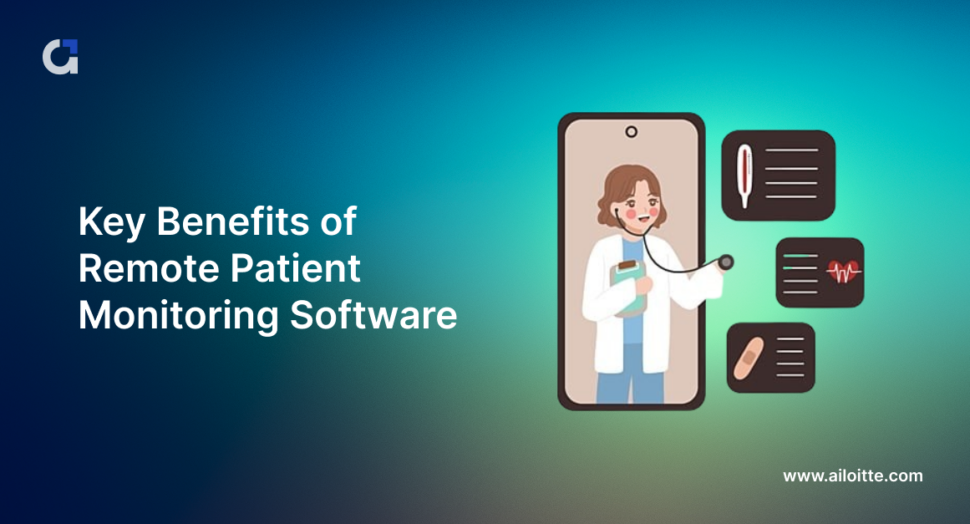Cutting-Edge RPM Software: Improve Patient Results with Modern Technology
Wiki Article
The Future of Health Care: Remote Patient Checking Simplified
As healthcare remains to develop, one location that holds tremendous assurance is remote patient monitoring. The idea of streamlining this procedure via technological developments is reshaping the method treatment is provided and obtained. With an emphasis on boosting person end results and streamlining healthcare delivery, remote tracking is positioned to transform the market. By discovering the advantages, technical advancements, and future fads in this field, we can obtain useful understandings into the transformative capacity of remote individual tracking.Advantages of Remote Patient Tracking
Remote patient surveillance provides a multitude of benefits for both health care suppliers and people alike. Furthermore, remote patient tracking improves the total quality of care by supplying an extra thorough and holistic sight of clients' wellness condition past traditional in-person sees.Moreover, remote client monitoring can lead to improved patient outcomes and complete satisfaction. Remote tracking can decrease the requirement for frequent medical facility gos to, reducing health care expenses for both patients and service providers.
Innovation Driving Remote Surveillance
In the world of modern medical care, technical improvements play an essential function in driving the evolution and efficiency of remote patient tracking. The assimilation of ingenious innovations such as wearable tools, mobile applications, and cloud-based systems has actually changed the method healthcare service providers from another location monitor and handle individual health and wellness - remote patient monitoring platform. These technologies enable continuous real-time tracking of vital signs, medicine adherence, and other vital health data, permitting prompt interventions and personalized treatment plansOne secret technology driving remote tracking is the Internet of Things (IoT), which allows seamless connection in between clinical devices and healthcare systems. IoT devices such as smartwatches and wireless sensors accumulate and send patient data to centralized systems, assisting in remote monitoring from anywhere in the globe. Expert system (AI) and equipment learning algorithms better enhance remote surveillance by evaluating vast quantities of client information to detect patterns, anticipate wellness trends, and sharp health care suppliers to prospective problems.
Effect on Healthcare Distribution
With the combination of advanced technologies driving remote client tracking, the influence on medical care delivery is becoming significantly extensive and transformative. Remote person surveillance allows medical care suppliers to supply even more tailored and aggressive like clients, leading to boosted health and wellness end results and minimized hospital admissions. By remotely tracking crucial signs, signs and symptoms, and medication adherence, health care experts can interfere early, stopping complications and boosting the overall quality of treatment.Moreover, remote surveillance enhances accessibility to healthcare services, specifically for individuals in underserved or rural locations. Patients can get continual tracking and assistance from their homes, getting rid of the need for regular in-person sees. This not just conserves time and minimizes costs for both individuals and healthcare facilities but likewise lessens the threat of exposure to infectious conditions, a critical consideration in the current medical care landscape.
Additionally, remote client surveillance makes it possible for healthcare carriers to much better assign sources and prioritize care based upon real-time data. By identifying high-risk clients and stepping in without delay, medical care delivery becomes much more effective and efficient, eventually bring about a more sustainable and patient-centered healthcare system.
Improving Individual Results

Additionally, RPM allows for positive monitoring of persistent conditions, reducing the likelihood of intense worsenings and healthcare facility readmissions. Clients gain from increased ease and convenience, as they can receive treatment in their very own homes while staying attached to their healthcare companies. This continual surveillance not just enhances patient fulfillment yet likewise fosters a feeling of empowerment and engagement in their very own health and wellness management.
Future Trends in Remote Tracking
Accepting innovative modern technologies in remote person monitoring is forming the future landscape of medical care distribution. The future fads in remote surveillance are anticipated to revolutionize the method healthcare is supplied, making it more reliable and patient-centric. One considerable trend is the boosted use wearable gadgets and sensing units to collect real-time information, enabling health care providers to keep an eye on people constantly without the demand for frequent in-person check outs. These tools can track vital signs, drug adherence, and task degrees, offering a comprehensive sight of the person's wellness standing.
Moreover, telehealth systems are becoming a lot more sophisticated, permitting digital examinations, remote diagnosis, and remote person monitoring all remote patient monitoring platform in one integrated system (remote patient monitoring platform). This all natural technique to remote monitoring is simplifying health care distribution, improving patient fulfillment, and eventually, boosting total high quality of treatment
Verdict
In verdict, remote individual tracking uses many advantages in healthcare distribution, driven by improvements in technology. It has the prospective to improve person end results and change the means medical care is provided. Future patterns in remote monitoring will remain to form the landscape of medical care, supplying chances for more reliable and individualized individual treatment.Remote patient surveillance provides a wide variety of benefits for both medical care suppliers and clients alike. Additionally, remote patient surveillance improves the total top quality of treatment by providing a much more holistic and comprehensive sight of individuals' health and wellness status past traditional in-person sees.
Furthermore, remote person tracking can lead to better patient end results and complete satisfaction. Remote patient monitoring allows healthcare service providers to provide more customized and proactive treatment to patients, leading to enhanced health and wellness results and reduced medical facility admissions. Remote person monitoring (RPM) plays a significant role in boosting person end results by supplying constant, real-time data that enables medical care carriers to interfere immediately and change treatment plans as required.
Report this wiki page